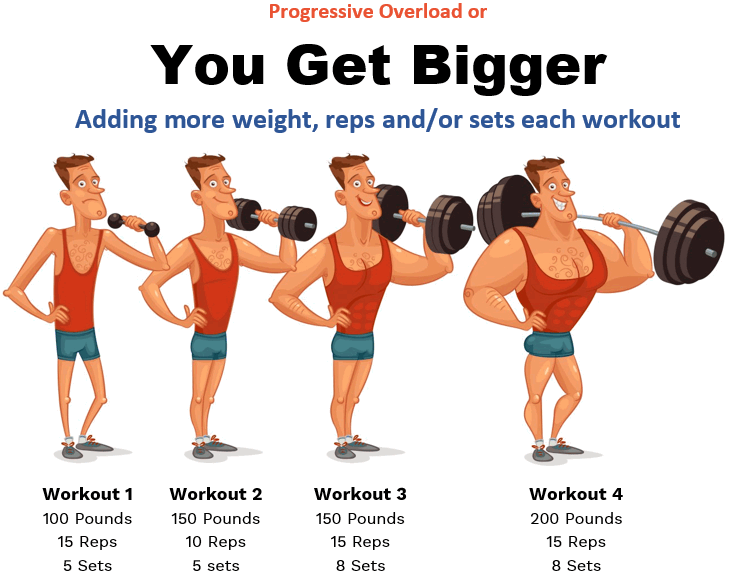

Progressive overload is one of the Fundamental training principles that EVERYONE should be following, no matter what their age, experience level or fitness goals.

He cautioned against sticking to the same fitness routine for more than three months.In this episode of WellFit 365, I cover an extremely important principle in fitness training, progressive overload. "Stick to your workout routine and gradually increase the demands on your muscles over time to achieve sustained progress," Kamboj recommended. Focus on hydration to flush away the toxins from the body. Kamboj said, "It is during rest and on off days when the human body grows." He advised to allow your muscles enough rest between sessions to repair and rejuvenate to avoid overtraining and injuries.Īlso Read: Cardio Or Weight Training: Which One Should Come First? Focus On Nutritionįuel your body with a balanced diet rich in protein, complex carbohydrates, and healthy fats to provide the necessary nutrients for muscle growth. Tracking your progress allows you to monitor your improvements and ensure consistent progression. Maintain a workout journal or use a fitness app to track the intensity of your exercises, sets, repetitions, and weights. If you trained biceps with dumbbells the first time next time, prefer a barbell or a machine.Įffective Tips To Maximise Progressive Overload Track Your Progress

"The best way is to start your workout with a different exercise every time you perform," Kamboj stated. Regularly introduce new exercises into your routine to challenge your muscles in different ways. Kamboj explained, "By minimising rest time, you keep your muscles under tension for a longer duration, promoting muscular hypertrophy." Incorporate Different Exercises Shortening your rest periods between sets can increase the intensity of your workout. This variation keeps your muscles engaged and prevents plateauing," Kamboj added. "Start with three sets and 15 reps a week and progressively increase them over time.
#Progressive overload explained how to#
This can be done by adding weight to your lifts or increasing the time under tension, by increasing the no of sets.Īlso Read: Functional Training For Weight Loss: What Is It And How To Incorporate It In Your Workout? Alter Your Reps And SetsĪdjust the number of reps and sets you perform to keep your muscles guessing. Kamboj said, "Begin with a weight or resistance level that challenges you but allows you to maintain proper form." He explained that as your muscles adapt, gradually increase the intensity to maximise muscle gain. Incorporating Progressive Overload Into Your Routine Gradually Increase The Number This principle applies to any form of resistance training, whether you prefer lifting weights, using resistance bands, or even using your body weight. In layman's terms, progressive overload is shocking your muscles every time you train by doing more reps or sets. What Is Progressive Overload?Īccording to certified personal trainer Saurav Kamboj based in Dubai, progressive overload is the practice of continuously challenging your muscles by increasing the intensity, volume, or frequency of your workouts. So, if you're new to working out or looking for strategies to grow muscle, let's start by learning about what exactly power training is, how to include it into your routine, and effective tips to maximise its benefits. One of the most fundamental principles in muscle development is progressive overload. Muscle building is a slow process that requires dedication, discipline, and a systematic approach. Whether it's for enhanced performance, increased strength, or simply aesthetic appeal, gaining muscle has become a widespread dream.

In today's fitness-centric world, sculpted muscles have become the new normal, with countless individuals aspiring to achieve the perfect physique.


 0 kommentar(er)
0 kommentar(er)
